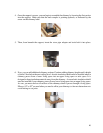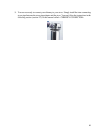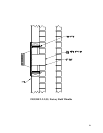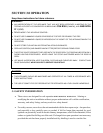28
2.4 DRAFT
Your E.P.A Century stove’s performance will be optimised if it is installed with a chimney (flue)
system that provides an adequate draft. The draft is the force that moves air from the appliance up
through the chimney and is predominantly affected by the height and diameter of the chimney, as
well as the stack temperatures of the stove. If you test the draft using a pressure gauge, the reading
should be between .05 - .07 inches of water column (w.c.) at a medium-high fire. A draft measure of
less than .03" w.c. will cause operational difficulties while too much draft (greater than .10" w.c.)
will result in over-firing of the stove. This can result in excessive operating temperatures. If this is
the case, a manual damper may be installed in the vertical chimney connector to help reduce
excessive draft.
2.5 OUTSIDE COMBUSTION AIR
It is recommended to install 3’’ (76mm) outside air intake in the room where the stove is located or
nearby.
The following are signs that a fresh air kit may be required:
• Your stove does not draw steadily, smoke rollouts occur, wood burns poorly, or back-draft
occurs whether or not there is combustion present.
• Existing fuel-fired equipment in the house, such as fireplaces or other heating appliances,
smell, do not operate properly, suffer smoke rollouts when opened, or back-draft occurs
whether or not there is combustion present.
• Opening a window slightly on a calm (windless) day alleviates any of the above symptoms.
• The house is equipped with a well-sealed vapour barrier and tight fitting windows and/or has
any powered devices that exhaust house air.
• There is excessive condensation on windows in the winter.
• A ventilation system is installed in the house.


















